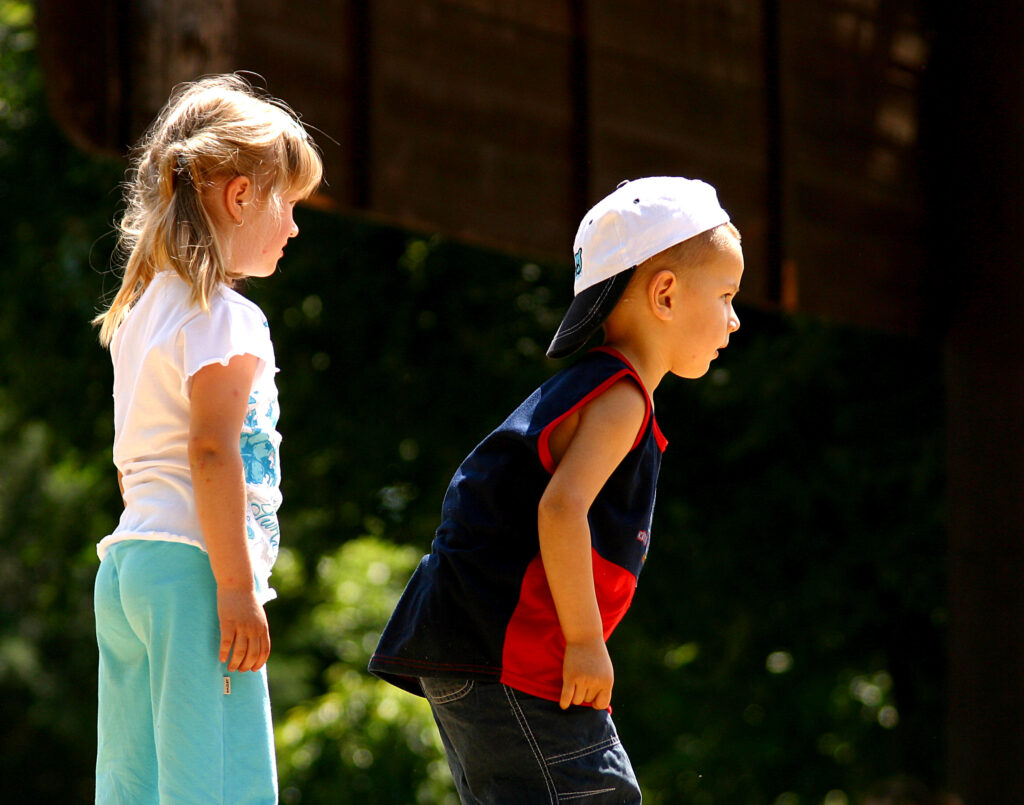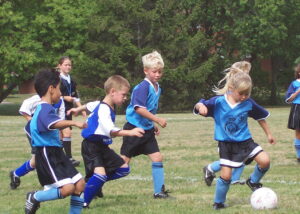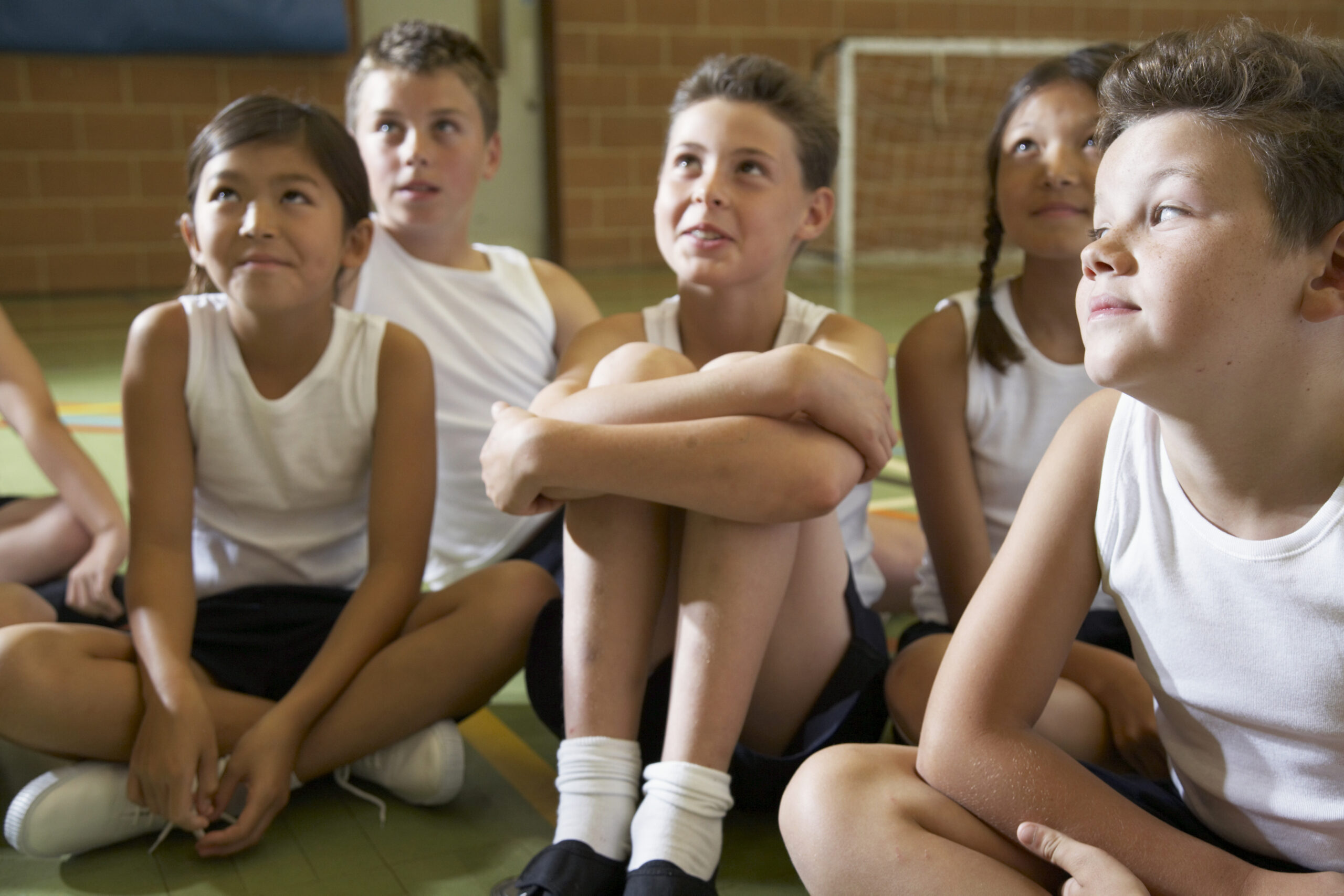Should primary schools have separate girls and boys team for sport?
Peter Woolton has been a primary school practitioner for over 20 years. He volunteered in youth work and schools prior to his qualifying as a teacher. During his time in schools, he has held a number of roles including Class Teacher, Assessment Manager, Assistant Head Teacher, Curriculum Manager and Governor. As well as an interest in website management, he is a keen sports “watcher.” He currently works as an administrator for Lifting Limits.
Primary School Sports – What’s the Problem?
Whilst I was training to be a teacher, some 27 years ago, a particular feedback session from my School Based Mentor has always remained with me. I had been teaching a maths lesson to a Year 6 class. As well as the “normal” feedback being given, the mentor also gave me a breakdown of who I asked questions of and those who gave answers. I would like to think that I was not being bias in asking more boys to answer than girls. But from that day on, I have tried to always be aware of who is getting the focus of the attention in particular subject areas.
And whilst I would not claim to have always got it right, an awareness of it has helped me to develop as a class teacher and mentor to new teachers. One particular subject area where this focus is prevalent is in PE. Working in a school that promoted girls involvement in sport, with their own teams across a range of events, and a school “house system” that always meant mixed teams, was something I was very proud of. However, following some reading and a recent conversation, I was left wondering…
Should we have Mixed Teams In Sport?

Over the last few years, there has been a growing trend within sport to develop opportunities for men and women to compete in mixed team events. In Athletics, we have mixed relays, Triathlons with two males and two females on a team of 4. Swimming has done something similar at major meetings. Some more traditional examples include mixed doubles in Tennis, Badminton and, on occasion, Snooker. In Ice-Skating there has, for such a long time, been mixed pairs and dance.
Men Vs Women in Sport
However it is unusual, in most professional sports, to find individuals of different genders competing against, rather than with, each other. Many reasons have been cited for this including physiology, skill, opportunity, finances and overall participation at an amateur level. Some sports have and continue to buck this trend. In equestrian events, such as Horse Racing, Dressage and Show Jumping, men and women compete directly against each other and have done so for many years. And at long last women are increasingly growing in profile and success in these disciplines, whether that’s Katie Walsh, Bryony Frost and Rachael Blackmore competing in the Grand National or motor racing star Alice Powell, who has spent her career challenging for podium places alongside the men. (Kessel, 2018)
More recently, the professional Snooker tour and competitions have been open to male and female players. As of the start of the 2022/23 season, four women competed full-time on the mixed gender professional World Snooker Tour (WST) – the highest level of the sport. There is no such thing as the ‘men’s tour’ in snooker. There is, however, a Women’s World Snooker tour (World Women’s Snooker). Darts similarly has its female representation at events, as well as its own leagues.
In most forms of Motorsport, men and women are allowed to compete in direct competition with each other. There are some series which are female only, in an effort to promote women in motorsport, most notably the W Series and Formula Women. However, these series have been criticised by some for segregating female drivers as opposed to supporting them in their own campaigns.
The Direction Schools Should Take
Therefore, as professional sports begin to explore further opportunities for mixed teams and men competing against women, isn’t it right that our schools do likewise?
In her article, from a number of years ago, journalist Anna Kessel wrote for The Guardian a piece titled, ‘Why should a primary school separate girls and boys for sports day?’ She suggested that, “It’s astonishing what people can work themselves up into a lather about these days. A primary school in Inverness has announced that girls and boys will compete together on sports days. Incredibly, the news has prompted national debate.” (Kessel, 2018)
Boys Vs Girls – Is There a Problem?
And perhaps her point is valid. What harm is there for a primary school child to compete in an egg and spoon or a 3-legged race, boys vs girls. Would he or she notice the difference, or really care? As Dr Hilary Jones said, introducing a debate on Good Morning Britain at the time, “girls and boys are physically on an even level at primary age so there is no scientific reason to separate them.”
As I have already mentioned above, in some ‘professional adult sports’ men compete against women, so why not a 4-year old? Indeed, in football girls and boys are allowed to play together up until the age of 18, after the Football Association changed the rules in 2015, and girls’ teams can play against boys’ teams in organised leagues up to the age of 12. (Kessel, 2018).
Therefore, Kessel argues, “that the crux of the problem is old fashioned views about girls being less able than boys, physically and teaching boys and girls about respecting each other, and about “not supporting regressive gender stereotypes.””
So Should We Ever Segregate Sport?
I believe that there is an argument for a time and place in doing this. It can be a positive thing. Following the achievement of the Lioness’s European Final win (and World Cup runners up), and the continued success of women in cricket, rugby and netball, the active participation of girls in these sports has grown. Not only can girls and young women see the enjoyment in these sports, but a rising belief that they might be able to do it themselves.

Prior to an increased exposure of women’s sport on TV many, apart from hardened fans, I, like many, would have been hard pressed to name a single woman who plays internationally for England, in any sport. The old adage of “if you see it, you can be it,” has helped raise the profile of opportunities in women’s sport.
What Does Research Suggest?
“Women’s sport is attracting younger, female fans which is great news for the industry as it shows we are starting to attract a distinctive fanbase. The more we can understand the motivations driving their connection with live women’s sports, the more this will enable us to build richer experiences for them in and out of the stadium, and ultimately deepen their fandom,” (Women in Sport, 2024)
However, we should not become over complacent with this growth. Whilst viewing figures, for both live and on TV and radio, have increased the general participation of girls and young women’s continues to cause some concern. BBC Newsround described a report by the Youth Sports Trust which found “that just over half (59%) of girls in secondary school said they like PE or like it a lot. In 2016, that number was three quarters (74%)” (BBC 2023)
I will not be alone in thinking that school sports, in all its forms, should encourage enjoyment and taking part for the benefits of physical and emotional well-being. We want children, teens and adults to be active and a life-long lover and participant of sport at all levels. Any barriers that can be smashed can only be a positive thing.
The reports main findings included:
- the main reasons girls gave for not enjoying PE was confidence and periods.
- Some students said that the curriculum sports such as hockey and netball felt “old fashioned and outdated”.
Some comments by girls taking part in the survey included:
- “Some people really like sport and some people don’t – and you’re forced together and kind of expected to get on with it… “
- “I really didn’t like it. It was all of it – getting on the bus, getting changed, getting really sweaty, the competitive people shouting at you for not doing the right thing.”
- “If schools offered a wider range of PE kit options, it could help improve girls’ uptake and enjoyment of sport.”
No Easy Answers

So perhaps there is some way to go. Maybe there is a place for mixed sports, especially when the physical differences are minimal. Indeed, if you listen to interviews given by some of the country’s top sporting females, they will often cite having to play in boys’ teams or alongside male siblings, where they developed skills and understanding of the game they play.
And in each class / year group at school, there will be girls that love sport as much as the boys. And without mixed teams there might not be enough other girls to make up a team. Participation is not yet widespread. However, it seems to me, it is the same girls picked for each mixed team.
And why might this be? I suggest a lack of opportunity, going back many years, for girls to play, means they have struggled to develop their skills, in the same way that boys have been encouraged to do so. It is good to note the growing number of clubs and volunteer groups who are introducing or developing girls’ sections to their organisations.
For some girls, the thought of joining a boy’s or mixed team is intimidating. Whatever these reasons might be, it must surely be right, in order to start evening up the playing field, that girls are given additional opportunities. Just look at the playground football area. How many girls join in with the boys? More importantly, how many boys invite and welcome this participation? Now, it is true that some boys feel intimidated by joining in too, but in my observations over the years, far less so than girls.
As children grow, and the physical changes become more apparent then identified men’s and women’s teams is appropriate. If nothing else, it might help tackle some of the barriers that the feedback above identified.
I suggested earlier that I was interested in exploring this topic based on recent reading and conversations. I was, and still am, convinced that there is a place for girls’ only teams, to encourage participation, give access to quality coaching and offer a chance to shine. But there is also a time in which mixed teams have a role.
In closing, may I suggest that you read a comprehensive report carried out by Premier Education, called, “Should We Encourage Girl-Only Sports Teams in Primary Schools?” It is worth a read for anyone interested in this particular topic. They surmise:
“Improving access to sport for girls in primary school is more complex than simply encouraging girls-only sports teams. While girls-only teams have their place in schools, mixed teams are often beneficial for both genders. Improving participation for girls is more about creating equal opportunities, understanding and addressing the reasons for the current lack of participation, and encouragement.”
References
BBC Newsround, “Girls’ sport: Survey finds fewer school girls enjoying PE” https://www.bbc.co.uk/newsround/67076010 (accessed May 2024)
Kessel, A “Why should a primary school separate girls and boys for sports day?”
https://www.theguardian.com/commentisfree/2018/jun/05/primary-school-girls-boys-sports-day (accessed May 2024)
Premier Education, Female Only Sports Teams – Should We Encourage Girl-Only Sports Teams in Primary Schools? https://www.premier-education.com/
Click here to download the report
Women in Sport, Latest research from Women’s Sport Trust delves into visibility and fandom of women’s sport in 2023”
https://www.womenssporttrust.com/latest-research-from-womens-sport-trust-delves-into-visibility-and-fandom-of-womens-sport-in-2023/ (accessed May 2024)
World Women’s Snooker, “Why do men not compete on the ‘Men’s Tour?” https://www.womenssnooker.com/about/faqs/#:~:text=As%20of%20the%20start%20of,’men’s%20tour’%20in%20snooker (accessed May 2024)
Also:
The Education Hub – Department for Education, (March 2024), How we are ensuring boys and girls have the same opportunities for school sport https://educationhub.blog.gov.uk/2024/03/25/how-ensuring-boys-girls-have-same-opportunities-school-sport/ (accessed May 2024)
